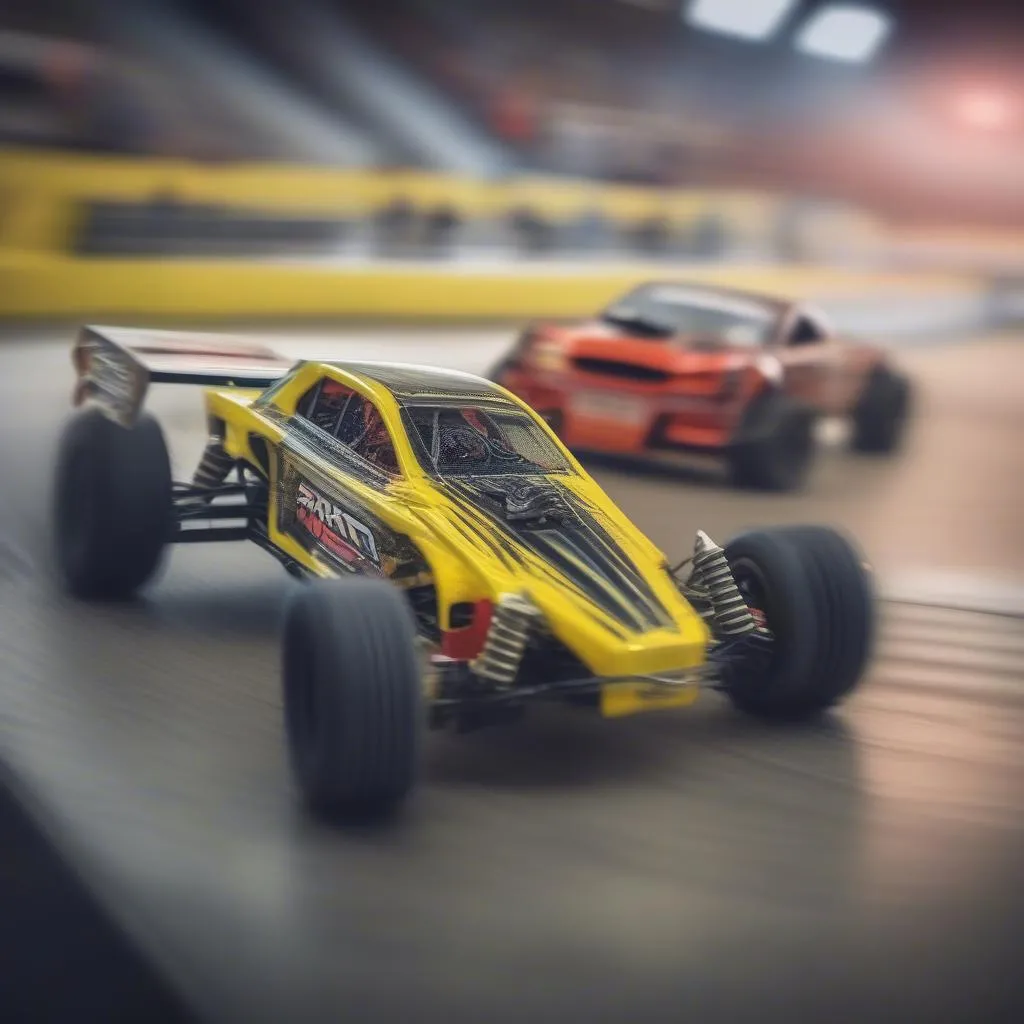Imagine this: you’re at the local track, the air thick with anticipation, and two tiny, sleek cars line up at the starting line. The engines roar to life, and with a burst of speed, they launch forward in a blur of color. This is the world of RC car drag racing, a thrilling and competitive hobby that captures the excitement of full-sized racing.
The Appeal of RC Car Drag Racing
RC car drag racing has become increasingly popular in recent years, appealing to a wide range of individuals. Here’s why:
- Accessibility: Unlike full-sized racing, which requires significant financial investment and logistical hurdles, RC car drag racing is relatively affordable and easy to get started with.
- Thrill of Speed: The adrenaline rush of watching these tiny cars accelerate with lightning speed is unmatched. The sense of control and precision needed to navigate tight turns and maximize speed adds to the excitement.
- Community: The RC car drag racing community is vibrant and welcoming, providing a platform for enthusiasts to share their passion, exchange knowledge, and compete against one another.
Understanding the Basics of RC Car Drag Racing
The Components
An RC drag racing car is built for speed and performance. Key components include:
- Motor: A powerful motor, often brushless for higher performance, is the heart of the car.
- ESC (Electronic Speed Controller): This device regulates the power flow from the battery to the motor, controlling speed and acceleration.
- Battery: High-capacity batteries provide the energy needed for high-speed bursts. Lithium-polymer (LiPo) batteries are commonly used.
- Chassis: A lightweight and durable chassis is essential for handling the power and ensuring stability.
- Wheels and Tires: Wide, grippy tires designed for traction are vital for efficient acceleration.
- Body: The body is primarily for aesthetics but can affect aerodynamics.
The Race
RC car drag races are typically held on a track with a designated starting line and finish line. Cars are launched simultaneously, and the car that crosses the finish line first wins.
The Challenges
While RC car drag racing is exhilarating, it also comes with its fair share of challenges:
- Tuning: Finding the optimal settings for your car’s motor, ESC, and gearing requires experimentation and fine-tuning.
- Battery Management: LiPo batteries can be delicate and need careful handling and charging.
- Track Conditions: Track surface and temperature can significantly impact performance, requiring adjustments to your car’s setup.
Getting Started with RC Car Drag Racing
Choosing the Right Car
The first step is to select a car that meets your needs and budget. Consider factors such as:
- Performance Level: Beginners may want to start with a basic car, while experienced racers can opt for high-performance models.
- Brand: Established brands like Traxxas, Team Associated, and Losi offer reliable and competitive cars.
- Availability of Parts: Ensure that spare parts are readily available for your chosen model.
Finding a Track
There are several ways to find a local RC car drag racing track:
- Online Forums: Search online forums dedicated to RC racing.
- Local Hobby Shops: Hobby shops are a great resource for information and recommendations.
- RC Clubs: Join an RC club in your area to connect with other enthusiasts and get access to tracks.
Essential Accessories
In addition to your car, you will need:
- Charger: A dedicated LiPo battery charger is essential for safe and efficient charging.
- Tools: A basic set of tools will be needed for maintenance and repairs.
- Spare Parts: Always have spare batteries, tires, and other essential parts on hand.
Safety First!
RC car drag racing is a fun and exciting hobby, but it’s important to prioritize safety:
- Always wear safety glasses: Protect your eyes from flying debris.
- Follow track rules: Adhere to the safety guidelines established by the track owner.
- Be aware of your surroundings: Keep an eye out for other racers and spectators.
Resources
- RC Car Drag Racing Forums: Connect with fellow enthusiasts, share knowledge, and get advice.
- RC Car Drag Racing Clubs: Join a local club to meet other racers and access tracks.
- RC Car Drag Racing Videos: Watch videos to learn about different car setups, racing techniques, and track design.
- RC Car Drag Racing Manuals: Consult manuals to learn about the technical aspects of your car and racing.
Beyond the Basics
As you become more experienced, you can explore advanced aspects of RC car drag racing:
- Tuning and Modifications: Experiment with different settings and modifications to enhance performance.
- Competition: Participate in local races and events to test your skills against other racers.
- Building Your Own Car: Design and build your own custom car from scratch.
 RC Car Drag Racing Competition
RC Car Drag Racing Competition
Frequently Asked Questions
What is the fastest RC car?
The fastest RC cars can reach speeds of over 100 mph, but these are typically custom-built and highly modified for maximum performance.
How much does it cost to get started with RC car drag racing?
The cost can vary depending on the type of car you choose and the accessories you buy. A basic starter kit can cost around $100, while more advanced cars and equipment can cost several hundred dollars.
Where can I find RC car drag racing parts?
Hobby shops, online retailers, and specialized RC stores are excellent resources for finding parts and accessories.
Is RC car drag racing safe for kids?
RC car drag racing can be a safe and fun hobby for children, but it’s important to supervise them closely and ensure they wear proper safety gear.
Let’s Get Started!
Ready to experience the thrill of RC car drag racing? Contact us at +84767531508 for assistance with diagnostics and settings, and we’ll be happy to help you get started on your racing journey! We have a team of experts ready to guide you every step of the way. Share your racing stories and connect with other enthusiasts on our RC Car Forum.


